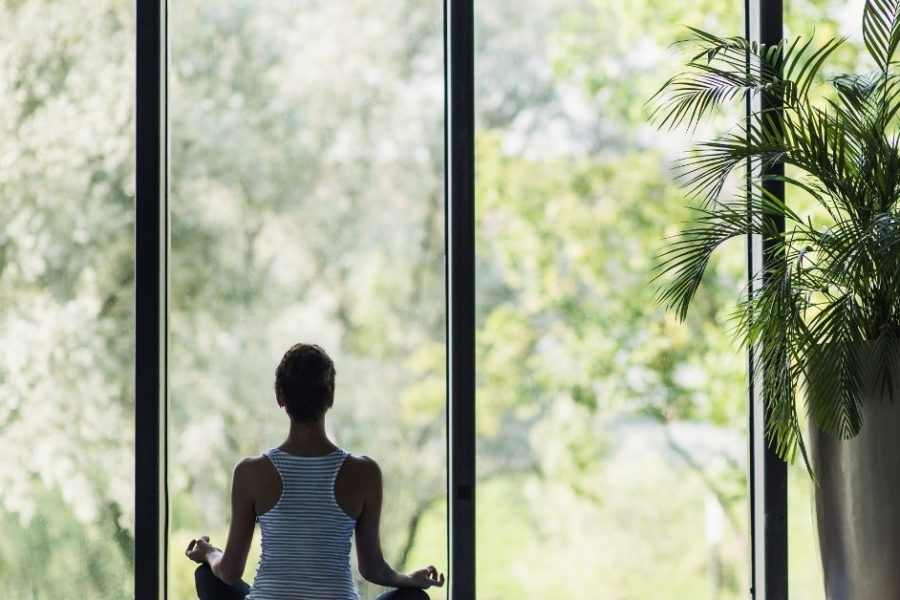Yoga breathing has been around for centuries but only recently there has been a huge wave of interest in breathing practices due to its many scientific and spiritual benefits.
Yoga breathing or pranayama is an effective tool for self-care that naturally affects your emotional and physical states to provide balance. In Sanskrit, prana means “life force” or “life energy” and yama means “to extend or draw out”. Pranayama is the practice of controlling your breath through different breathing exercises to affect your emotional and physical state to create calm, boost your mood, or increase energy levels.
There’s a scientific reason why yoga breathing affects your emotional and physical well-being and it starts with your body. Through yoga breathing, you’re able to affect our autonomic nervous system. The autonomic nervous system governs everything that you see, feel, and experience!
The autonomic nervous system is made of two parts: the sympathetic nervous system and the parasympathetic nervous system. Let’s explore these two parts of the nervous system to understand why breathing practices are so beneficial for emotional and physical well-being.
Sympathetic Nervous System | The “Fight or Flight”
Think of the sympathetic nervous as the gas pedal of the body which revs your body up for the action (also called the “fight or flight” response). In this state, your body increases cortisol levels (known as the stress hormone), increases your heart rate, and increases your focus and alertness.
When you’re in a state of panic, say for example from almost getting into a car accident. Notice your breathing — in this moment, it’s fast and shallow. It’s also centered in the chest. By breathing slowly and deeper, you are able to bring your body back to a more balanced state of calm.
Parasympathetic Nervous System | “Rest and digest”
On the other hand, we have the parasympathetic nervous system. Think of the parasympathetic side as the brake pedal of the body (also called the “rest and digest” response). When your body is in this state, your heart rate slows down, your cortisol levels decrease, blood pressure goes down and your body increases blood flow to the stomach for digestion.
You’re in a parasympathetic response when you’re asleep, and this state carries when you wake up in the morning. In this state, your inhalations and exhalations are long and draw out and in the belly. If you still feel groggy and sleepy when you wake up, instead of grabbing a coffee, you can use breathing techniques to boost your energy. Do this by breathing shallowly and fast to increase your cortisol levels to get you alert for the day.
These two systems are powerful in affecting your body’s physical and emotional states. And since the breath is directly linked to your nervous system’s response – you can use breathing practices as a way to help induce calm or excite your body for action!
What is Yoga breathing?
Yoga breathing has many names, some call it pranayama, breathwork, or breathing exercises. Ultimately, the breathing practices that I teach you are simple, safe, and scientific-based. I teach you how to use your breath through different breathing exercises and techniques to instantly affect your autonomic nervous system, stress response, mood, and energy levels. Yoga breathing is an accessible and safe method to help you manage your stress and provide balance in your life.
A Natural Self-Care Tool
Yoga breathing is a safe, simple, natural, and effective self-care tool. Everyday we use tools to affect our nervous system whether it’s grabbing a bottle of wine to wind down at night, watching our favorite comedy, or eating ice cream after a long day. We turn to these rituals to help us either calm down or excite our nervous system. But with using breathing practices, we are able to safely and naturally affect our nervous system to make us feel better. Next time you are in a state of stress or feeling anxious, instead of numbing with a Netflix show or grabbing that sweet – try a quick breathing exercise and take notice of how you feel! Have you tried breathwork before? Let me know in the comments below!
Interested in trying breathwork? Try this 10 Minute Beginner Breathwork Meditation to get started:


